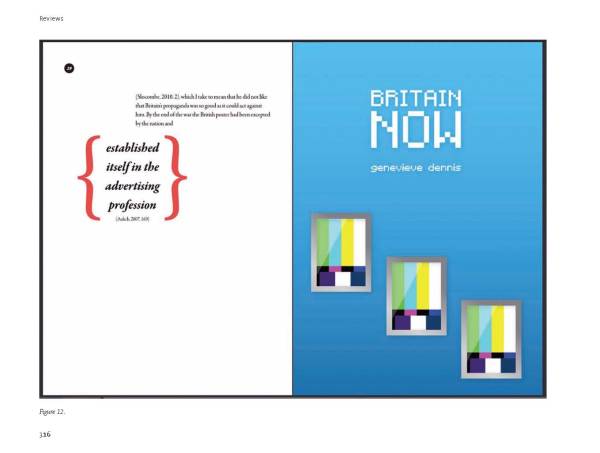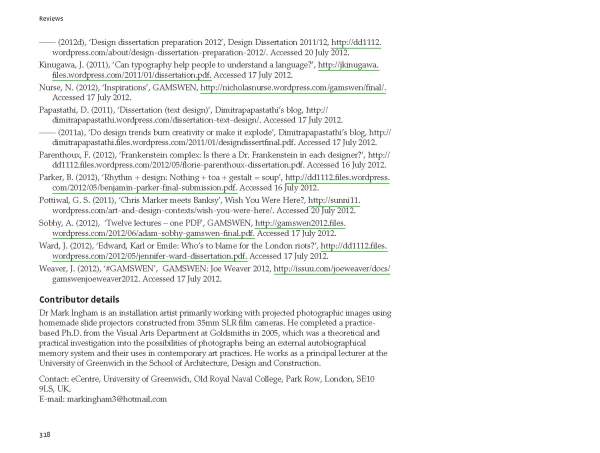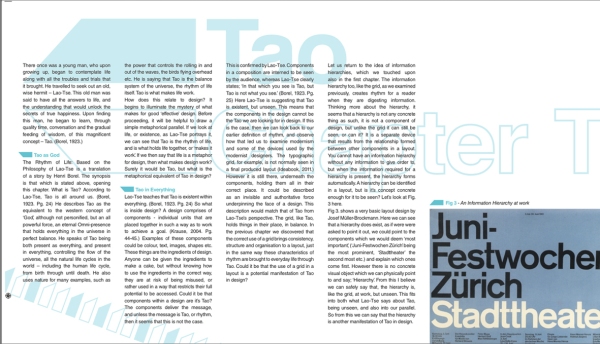Ingham-JWCP (1) PDF of Article 


















///
From Wish You Where Here? to GAMSWEN and onto Designed Dissertations:
Connecting the design studio with writing in design.
(Unpublished version)
Keywords:
Design, Dissertation, Writing, Studio, Lectures, Practice, Connectivism
Author’s bio: Dr Mark Ingham.
I am an installation artist primarily working with projected photographic images using homemade slide projectors constructed from 35mm SLR film cameras. I completed a practice-based PhD from the Visual Arts Department at Goldsmiths in 2005, which was a theoretical and practical investigation into the possibilities of photographs being an external autobiographical memory system and their uses in contemporary art practices. I work as a Principal Lecturer at the University of Greenwich in the School of Architecture, Design and Construction.
Introduction
This review describes the evolution of three art and design ‘writing’ projects delivered during the contextual studies courses of the undergraduate Graphic and Digital Design and 3D Digital Design and Animation programmes in the then Communication Media for Design Department in the University of Greenwich’s School of Architecture, Design and Construction. This review briefly tells the story of how and why these projects have developed over the past five years.
Contexts
50% attendance, 50% average mark, and 50% plagiarised. A slight exaggeration, but this is how it came across to me when in 2007 I started to assess the seemingly half-hearted essays that were being produced by the 30 first year BA/HND graphic and digital design and 3D digital design and animation students, in our Design Department. The reasons for this unsatisfactory state of affairs were not immediately apparent, as the lecturers were very lively, delivering exciting material to sparky students.
Additionally I was one of a team of Design Dissertation tutors, and although there was some high quality writing being produced by the 3rd year design students, many were in the ‘lets get it out of the way before we go on to the proper work of our practice’ variety. Some students enjoyed, some hated and many muddled through producing writing and research that was disconnected with their lives, design and their studio work. The position of writing in relation to the practice that went on in the design studio seemed semi-detached at best.
Having just been appointed a 0.5 senior lecturer with responsibility for the contextual studies delivery within the department, there was a responsibility to find out why so many students had issues with writing and why most had to invent complex and convoluted strategies to, even put pen to paper or fingers to keys. I wanted to go beyond the beaten path of excuses of blaming a plethora of problems for these occurrences. Dyslexia and other barriers to processing and presenting written information, was and still is an issue with many students. We have students from a variety of ‘academic’ educational backgrounds and we have paying students from abroad. Rather than the usual tired resignation I wanted these reasons, and others, to be celebrated and challenged. To cut a short story even shorter, based on a broad research survey, I produced a report for the department on the then current debates on the position of writing in art and design Higher Education in the UK and internationally. At the start of this research process it soon became clear, as I had suspected all along, that a great deal was being said and put into practice in this field. Having just come out of a especially constructive experience of practice-based visual arts doctoral research where the debates about the relationships between, writing, theory, research and practice had raged for over twenty years, I was not at all surprised that they were alight elsewhere in art and design education.
The work carried out by Julia Lockheart and John Wood and many others, for Writing-PAD (Writing Purposefully in Art and Design) at Goldsmiths and elsewhere nationally and internationally, became central to the articulation of this report. Their re-thinking and research gave me the conceptual ammunition to propose to the School and the Department a shift in the way contextual studies, and especially writing, was delivered and employed by the students. It was about this time that Writing-PAD started to publish the Journal of Writing in Creative Practice, which has been a publication I always turn to when doubts, external and internal, creep in about the validity of how writing is now being delivered in the design department.
After the report was given to the Head of School and to the Head of Department, action was taken to move the position of writing from something that seemed to only happen at the tail end of courses to one that occurred continuously during the contextual studies classes. Two of the first year briefs where re-written with this conceptual shift in mind and the design dissertation course was manipulated to encourage and enable students to involve more of their studio practice and practical skills. In the next sections I will sketch out how these ideas were put into practice.
Wish You Where Here?
The first year’s first term’s writing brief for the course ‘Art and Design in Context’ was re-drawn and called Wish You Were Here? It involved the students carrying out in depth research into two artists or designers one of their choice and one given to them by their tutor. This ‘getting under the skin’ research then had to be transcribed into a three way fictional conversation between the student and the other protagonists. The aim of the brief was to introduce the students to ‘academic’ research and its various relationships to the practice of writing. The aim of the project is to help create a greater understanding of the importance of thoughtful questions and effective questioning in these types of research and writing processes. It was, and is still is, a writing ‘icebreaker’ where short yet continuous ‘postcard’ length texts, along with complementary illustrations, between the participants in this three-way docu-fiction ‘conversation’, were the indicated outcomes. This years student’s blogs can be see on the course blog (Andersdotter 2011).
Figure 1: Gurmakh Singh Pottiwal ‘Meets Banksy and Chris Marker’ (Wish You Where Here?)
Its outcomes have developed from being mainly a series of hand written postcards or letters to their often long dead artist/designers to now including all the varieties of digital and social communication channels. This imaginary ‘séance’ has become electronic and the results are often creatively and conceptual electrifying. Bringing artists and designers together in this fictional space enabled a depth of thinking that the previous essay element had rarely achieved. Examples such as Banksy meeting Chris Marker (Figure 1), Barabra Kruger conversing with Edward Hooper (Andersdotter 2011) and Eva Hesse writing to Jules Cheret (Figure 2), have been constructed.
Figure 2: Hannah Farrell ‘Meets Eva Hesse and Jules Cheret (Wish You Where Here?)
GAMSWEN
In 2008 following on from the first term’s contextual studies programme the second term consisted of a lecture series that was loosely based on some 20th century Modernist and Post-modernist ideas that have influenced design. The course consisted of twelve 1-2 hour lectures/seminars in a traditional lecture hall. The students were then summatively assessed on a 1,500 – 2,000 word essay based on a series of given titles they could choose from. Although the lectures were on relevant topics, intelligently and enthusiastically delivered the attendance was poor. The essays were dry, often pseudo looking, attempts at ‘academic’ writing.
As this was an unsatisfactory situation for all concerned I decided to construct a brief that attempted to mitigate most of these factors. Called GAMSWEN it introduced two concepts to the course. The first was that the role of note taking was seen as a key element to the understanding of the ideas being expressed in the lectures. The students were asked to think of themselves as ‘investigative journalists’ attending a press conference, writing for a magazine or newspaper, (hence news and mag backwards for the brief’s title). So this did not become just another note taking exercise the second half of the brief was to write up the lectures into a series of articles, which were then produced as a designed and physical publication; a magazine, pamphlet or newspaper, see (Demetriou 2012) (Figure 3, (Hidalgo 2012) (Figure 4), (Weaver 2012) (Figure 6).
Figure 3: Eleni Demetriou ‘G GAMSWEN 2012’ (GAMSWEN)
Figure 4: Edisson Hidalgo ‘Foresight Infusion’ (GAMSWEN)
The aim was very simply to link what the students were learning in their design courses, typography, layout and other design processes, to the history and concepts they were learning about in these series of lectures. The reasons for being at the lectures were now made explicit in the way the brief was constructed by having to take notes and these notes were then directly linked to the written and designed outcome. Now that there are five years worth of GAMSWEN publications the students are clearly able to see what is expected of them, see (Nurse 2012) (Figure 5), (Sobhy 2012) (Figure 7).
Figure 5: Nicholas Nurse ‘Inspirations’ (GAMSWEN)
This structure also enables the students to iteratively develop their writing skills in a framework that allows for they design skills to be used to enhance the communication of complex conceptual concepts. This year’s (2012) 90 design students produced some outstanding and thoughtful writing in imaginatively designed publications (Ingham 2012b). The use of course blogs (Ingham 2012a, 2011b, 2010a) and individual blogs (Ingham 2012c) to gather all their design and writing work into one space has also helped the integration of practice, theory and research. Their online presences have also helped the students write for an audience and use the peer-to-peer opportunities made available by this type of social media. They now write more, on average 4,000 words as opposed to 1,000, and are more analytical, coherent and stylish in their content (Ingham 2012a). Above all the students appear to, enjoy both the act of writing and the processes of getting it to a professional publication standard.
Figure 6: Joe Weaver ‘#GAMSWEN’ (GAMSWEN)
Figure 7: Adam Sobhy ‘Twelve Lectures – One PDF’ (GAMSWEN)
Designed Dissertations
I have always seen the Wish You Were Here? and GAMSWEN projects as ways of introducing the students to the Design Dissertation experience that starts at the end of the 2nd year and continues through until just after the winter break in their 3rd year, see (Ingham 2012d, 2011a, 2010). These introductory writing briefs enable the students to see the connections between what they are doing in the studio with the writing they are asked to do about art and design issues. They try to foster a harmonising relationship between all aspects of their programme of study. They also enable the students to critically challenge these relationships, see (Bennett 2011, 2011b), (Papastathi 2011, 2011a), (Kinugawa 2011).
Figure 8: Ishankie Charles ‘How Does 2D Typography Influence Our Emotions?’ (Design Dissertation)
The main modification in the Design Dissertation was to see it as a piece of research rather than a piece of lengthy writing. This then enabled us to connect the research practices that were happening in the studio with some of the methodologies and practices that as used in theoretical research, (Charles 2012) (Figure 8). We also introduced a design element to the submission, whereby the students were allowed to and encouraged to think of the content of the research as something to be published, (Dennis 2012) (Figure 12), (Ward 2012) (Figure 9). We had found that even though illustrations were always asked for, where relevant, the dissertations tended to the look and feel of a traditional academic dissertation. The students struggled to produce ‘academic’ writing and were being compared to other programmes of study were essays were the main mode of production.
This simple switch in thinking has meant the students are less ‘frightened’ of the idea of writing a 10,000 word dissertation and are seeing it more as a part of their design processes. It still has to be a critically and coherently argued piece of thinking, but the emphasis is now also on how the research is communicated. Now the writing and research carried out for the dissertation becomes a design project in its own right and is something that would go in their design portfolios, see (Crustna 2012) (Figure 11), (Parenthoux 2012), (Parker 2012) (Figure 10).
Figure 9: Jennifer Ward ‘Edward, Karl or Emile: Who’s to Blame for the London Riots?’ (Design Dissertation)
Figure 10: Benjamin Parker ‘Rhythm + Design: Nothing + Toa + Gestalt = Soup’ (Design Dissertation)
Conclusions
Ideas generated by Writing-PAD and the Journal of Writing in Creative Practice have been the mainstays behind the gradual change in the way writing has been taught to and with the students in the design department. I have taken a great deal from the general aims of these exciting initiatives and inspiration from the specific instances espoused online and on paper. In many ways the changes have not been hugely radical but I think have been very effective. I believe the student’s writing has improved both in ‘academic’ terms and even more importantly in terms of its relationship to their studio practice. We now have 89% attendance, 69% average mark and 0.9% plagiarism. These are some of the indications that the relationships between writing design and the design studio are now in a healthier state of affairs than five years ago.
Figure 11: Deeganrao Crustna ‘Interactivity: A Gateway to Reality’ (Design Dissertation)
Figure 12: Genevieve Dennis ‘Britain Then. Britain Now’ (Design Dissertation)
///
References: Student’s Work
Bennett, A. (2011), ‘Home Page’, Andrew Bennett’s Dissertation Blog, <http://abennett86.wordpress.com/> Accessed 17 July 2012
Bennett, A. (2011a), ‘IN THE BEGINNING WAS THE CHAIR’, Andrew Bennett’s Dissertation Blog, <http://abennett86.files.wordpress.com/2010/12/dissertation-main1.pdf> Accessed 17 July 2012
Chadd, N. (2011). Wish You Were Here? Sohpie Calle and Andy Warhol, https://nikkichadd.wordpress.com/desi-1109/wish-you-were-here/ Accessed 23 July 2012
Charles, I. (2012), ‘How Does 2D Typography Influence Our Emotions?’, <http://dd1112.files.wordpress.com/2012/05/ishankie-charles-dissertation.pdf > Accessed 17 July 2012
Crustna, D. (2012), ‘Interactivity: A Gateway to Reality’, <http://dd1112.files.wordpress.com/2012/05/deeganrao-crustna-final-dissertation.pdf> Accessed 16 July 2012
Demetriou, E.(2012),‘GAMSWEN 2012’, <http://issuu.com/elenide/docs/mag_wed2?mode=window&pageNumber=1> Accessed 17 July 2012
Dennis, G. (2012), ‘Britain Then. Britain Now: A Design Dissertation’, <http://gddd1112.wordpress.com/> Accessed 20 July 2012
Hidalgo, E, (2012), ‘Forsight Infusion’, GAMSWEN, <http://gamswen2012.files.wordpress.com/2012/06/edisson-hidalgo-gamswen.pdf> Accessed 20 July 2012
Kinugawa, J. (2011), ‘Can Typography Help People to Understand a Language?’, <http://jkinugawa.files.wordpress.com/2011/01/dissertation.pdf > Accessed 17 July 2012
Nurse, N. (2012), ‘Inspirations’, GAMSWEN <http://nicholasnurse.wordpress.com/gamswen/final/> Accessed 17 July 2012
Papastathi, D. (2011), ‘Dissertation (Text Design)’, DIMITRAPAPASTATHI’S BLOG, <http://dimitrapapastathi.wordpress.com/dissertation-text-design/> Accessed 17 July 2012
Papastathi, D. (2011a), ‘Do Design Trends Burn Creativity or Make it Explode’, DIMITRAPAPASTATHI’S BLOG, <http://dimitrapapastathi.files.wordpress.com/2011/01/designdissertfinal.pdf> Accessed 17 July 2012
Parenthoux, F. (2012), ‘Frankenstein Complex: Is there a Dr. Frankenstein in each designer?’ <http://dd1112.files.wordpress.com/2012/05/florie-parenthoux-dissertation.pdf> Accessed 16 July 2012
Parker, B. (2012), ‘Rhythm + Design: Nothing + Toa + Gestalt = Soup’ <http://dd1112.files.wordpress.com/2012/05/benjamin-parker-final-submission.pdf> Accessed 16 July 2012
Pottiwal, G.S. (2011), ‘Chris Marker meets Banksy’, Wish You Where Here?, <http://sunni11.wordpress.com/art-and-design-contexts/wish-you-were-here/> Accessed 20 July 2012
Sobhy, A, (2012), ‘Tweleve Lectures – One PDF’, GAMSWEN, <http://gamswen2012.files.wordpress.com/2012/06/adam-sobhy-gamswen-final.pdf>
Ward, J. (2012), ‘Edward, Karl or Emile: Who’s to Blame for the London Riots?’, <http://dd1112.files.wordpress.com/2012/05/jennifer-ward-dissertation.pdf> Accessed 17 July 2012
Weaver, J. (2012), ‘#GAMSWEN’, GAMSWEN: Joe Weaver 2012, <http://issuu.com/joeweaver/docs/gamswenjoeweaver2012> Accessed 17 July 2012
Course Blogs
Andersdotter, S. & Ingham, M. (2011), ‘Home Page’, Art and Design in Context 2011-12, <http://artdesigncontext1112.wordpress.com/> Accessed 23 July 2012.
Ingham, M. (2012a), ‘GAMSWEN MAGs’, #GAMSWEN, http://gamswen2012.wordpress.com/gamswen-mags/ Accessed 23 July 2012.
Ingham, M. (2012b), ‘Home Page’, #GAMSWEN, <http://gamswen2012.wordpress.com/> Accessed 20 July 2012.
Ingham, M. (2012c), ‘Students Blogs, #GAMSWEN, <http://gamswen2012.wordpress.com/students-blogs/> Accessed 20 July 2012.
Ingham, M. (2012d), ‘Design Dissertation Preparation 2012’, Design Dissertation 2011/12, <http://dd1112.wordpress.com/about/design-dissertation-preparation-2012/> Accessed 20 July 2012.
Ingham, M. (2011a), ‘Home Page’, Design Dissertation 2011/12, <http://dd1112.wordpress.com/> Accessed 23 July 2012.
Ingham, M. (2011b), ‘Home Page’, GAMSWEN, <http://gamswen.wordpress.com/> Accessed 20 July 2012.
Ingham, M. (2010), ‘Home Page’, Design Dissertation 2010, <http://designdissertation2010.wordpress.com/> Accessed 20 July 2012.
Ingham, M. (2010a), ‘Home Page’, ART/DESIGN/CONTEXT/2010/11, <http://artdesigncontext1011.wordpress.com/> Accessed 20 July 2012
///













Pingback: From Wish You Were Here? to GAMSWEN… Author: Mark Ingham « Art/Design/Context/2010/11
Pingback: From Wish You Were Here? to GAMSWEN…Mark Ingham « Design Dissertation 2011/12
Pingback: From Wish You Were Here? to GAMSWEN…Mark Ingham « Unit 8 Culture and Context
Pingback: From Wish You Were Here? to GAMSWEN….Author: Mark Ingham « #GAMSWEN
Pingback: From Wish You Were Here? to GAMSWEN… Author: Mark Ingham « 6 month scoping project: practice-based PhD supervision
Pingback: From Wish You Were Here?… Author: Mark Ingham « ATOPIA
Pingback: From Wish You Were Here? to GAMSWEN… Mark Ingham « Design Dissertation 2010
Pingback: Application for Senior Fellowship of the Higher Education Academy | MI SFHEA